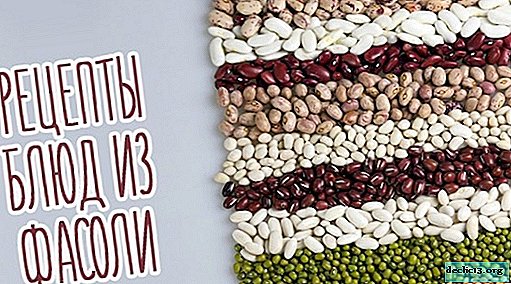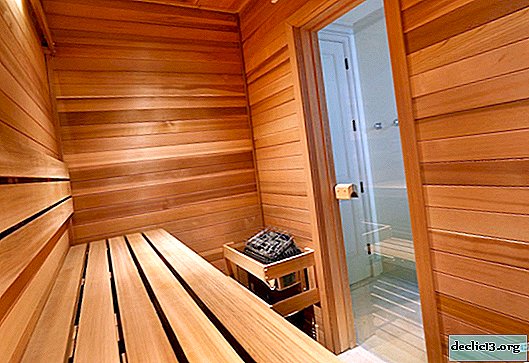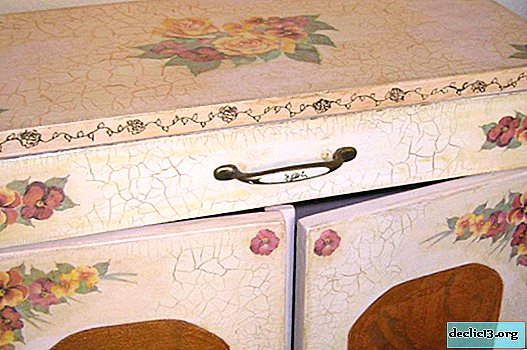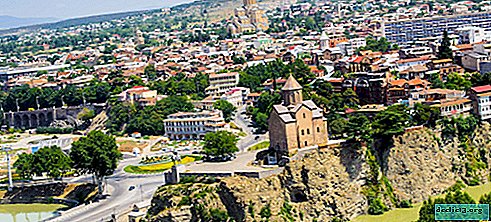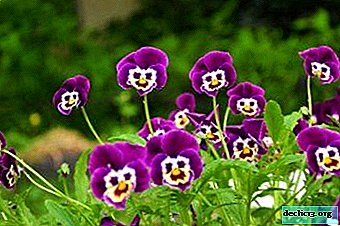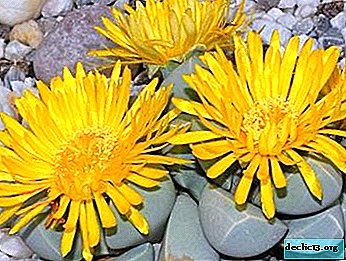Diseases and pests of sansevieria with a photo of the affected plant. Care Features
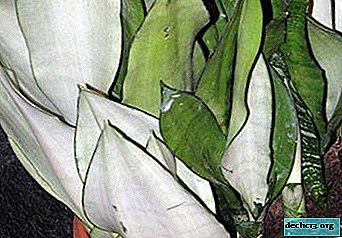
Sansevieria is a rather unpretentious houseplant that can put up even with conditions that are not quite favorable for itself.
But, sometimes, the flower still affects the ailment and in order to take timely rescue measures, it is necessary to understand the causes and understand the symptoms.
About what diseases and pests affect Sansevieria, as well as how to combat them and the proper care of the flower, later in our article.
Pike tail diseases with photo
Why are there problems with leaves?
First of all, with various diseases in the plant, the leaves begin to change.
Twisted
The cause of this symptom is most likely due to lack of moisture in the soil. Sansevieria does not like frequent watering, but, nevertheless, they need to be carried out regularly. It is enough to restore the substrate moisture regime optimal for the flower and the leaves will regain a healthy appearance.

Grimaced
If sansevieria is left for a long time in conditions of lack of lighting and at the same time is not watered, the result will be wrinkled leaves. If this happened to the plant, you must first carefully adjust the light mode - gradually rearranging the pot from the penumbra to the southern windowsill and adjust the irrigation mode.

Are falling
If a plant's leaves fall, it is most likely cold. Non-compliance with the temperature regime is fraught with death of the flowertherefore, having discovered such a sign in sansevieria, you should urgently move it to a warmer room.

Getting lethargic
Sluggish decaying leaves are a sign that the room temperature is too low. The plant urgently needs to be moved to a warmer place, after removing all damaged leaves.

Develops poorly or does not grow at all
Sansevieria begins to grow no earlier than filling the entire pot with its roots. Therefore, planting a young plant in a spacious container is not recommended.Also, the flower may stop growing due to too frequent watering. If sansevieria stubbornly does not want to grow, a way out of the situation is to transplant it into a smaller pot and water more than once every two to three weeks.

The plant withers and turns yellow
Fading yellow leaves are a sure sign that planting is thickened and lacking water. Also often this symptom manifests itself in flowers placed close to heating appliances. In order to help sansevier in this case, need to remove excess leaves, including those that have faded or turn yellow, and adjust the watering regime.

Fungus
Sansevieria is susceptible to several types of fungal diseases, including fusarium spotting and rhizome rot.
Fusarium spotting
It appears in the form of small watery spots that appear more often on young leaves. As the disease develops, the spots grow and acquire an elliptical shape, staining with reddish tones. Subsequently, a yellow fringe forms around the spots. If the lesions are extensive, they combine and cause the death of the plant.
The development of the disease provokes:
- excessive humidity of air and soil;
- a large amount of nitrogen in the soil;
- high temperature with insufficient ventilation.
You can avoid infection by maintaining the correct conditions, while treatment is carried out by repeated treatment with fungicidal preparations.

Rhizome rot
The disease provokes a fungus, leading to decay of the roots and bases of the leaves. Infection occurs through damage and wounds on the plant, especially when transported and waterlogged substrate.It is almost impossible to cure this ailment, therefore all efforts must be directed to prevention, namely, to prevent excessive soil moisture (about what should be the soil for sansevieria, read here).

Anthracnose
The disease is caused by pathogenic fungi. Small, depressed, brown spots of a round or ellipsoidal shape appear on the leaves. Gradually they increase in size, and their center becomes brighter than the edges. A yellow or light green edging is formed. Leaves dry.
The cause of the ailment, as a rule, is:
- excessive soil moisture;
- excessive air humidity;
- heat.
Removing the affected leaves and treating with fungicides will help overcome the disease.

Pests
Spider mite
The insect reveals itself by the appearance of whitish spots on the leaves. The pest feeds on the plant's juices, so it gradually withers and, after a while, dies. If the lesion is in the initial stage, to save sansevieria, you can wipe its leaves with a cloth soaked in the extract of citrus zest. If the plant is badly damaged, it is worth resorting to the help of insecticidal preparations.
Thrips
Colonies of pest larvae are localized mainly on the lower part of the leaves, which is why they can be found there. At the same time, light spots are visible on the upper side of the sheet. The leaf acquires a characteristic grayish brown hue and silver luster. As a treatment, repeated treatment of the plant with insecticides is carried out.
Mealybug
The pest settles at the base of the leaf outlet and eats the sap of the plant. Symptoms of damage are cotton-like lumps - the product of the vital activity of the insect, which it leaves on the leaves. Also, infected areas can change shape and color.
In order to save sansevieria, the mealybug is removed manually and the leaves are washed with a sponge soaked in soapy water.If the defeat is severe, resort to the help of insecticides.
Shield
The parasite feeds on the juice of young plants and their shoots. You can find his eggs on the back of the leaves. Parasites are removed using a swab dipped in a strong soapy solution, after which the insecticidal preparation is treated.
General care rules
 The optimum temperature in the summer is +20 +27 degrees, in winter +10 +18.
The optimum temperature in the summer is +20 +27 degrees, in winter +10 +18.- The plant prefers diffused light and easily tolerates partial shade.
- Sansevieria is watered sparingly from spring to autumn, and in winter it is limited to once every two to three weeks, while dusting the leaves from the dust with a slightly damp cloth should be done regularly.
- Humidity for a plant is not an important criterion, but nevertheless, it is better not to allow waterlogging, especially in combination with high temperatures, this can trigger decay processes.
- During the period of active vegetation, it is necessary to make top dressing once a month.
Any plant disease is easier to prevent than to take emergency measures to treat and save it, so the symptoms of all kinds of ailments and the methods that are used to restore the flower’s health are valuable information for every lover of indoor plants.

 The optimum temperature in the summer is +20 +27 degrees, in winter +10 +18.
The optimum temperature in the summer is +20 +27 degrees, in winter +10 +18.
